What is Kiel Canal? Where is the Kiel Canal located?
Kiel Canal, also known as Nord-Ostsee Kanal, is 98 km long artificial canal located in Germany, Schleswig-Holstein state. It was built in 1895 to fulfill the needs of the German Navy and merchants to connect the Baltic Sea with the North Sea. Now, after more than a century, it still provides vessels with a shorter and more protected route, avoiding Danish Straits.
It’s the busiest man-made waterway in the world with an annual average of 32 000 ships transporting 100 million tons of goods. It’s 90 ships daily!
Why should you choose kiel canal?
Navigating through the Kiel Canal saves approximately 450 km (243 NM) compared to the route through the Denmark Straits. Not only it saves the time (and fuel), but also provides good protection over storm-prone routes around the Jutland Peninsula.
It also gives unforgettable experience to be a part of the world’s busiest route and see huge cargo ships passing just meters of your boat.
How to pass Kiel Canal on a sailboat (or small recreational boat)?
Now, let us guide you through the whole Kiel Canal transit. We will start from the West, as it was exactly our case. But no worries – coming from the East is pretty similar, you just need to reverse all information given here.
Kiel-Holtenau lock
In Kiel-Holtenau there are two pairs of locks – smaller and bigger. At the moment, only big locks are operational (2024). Do not proceed to the small, northern locks as advised in many outdated publications or pilot books. And always seek for updates on the official Kiel Canal website.
Approaching from Kiel, recreational vessels must wait in the designated waiting area (red triangle on the map below).
When to enter the lock at Kiel-Holtenau?
The most important thing which you look for while waiting in the designated area are signal lights, located on the mast on the lock island (red dot on the map above). First light which interests you is white over red, which means “prepare to enter”. It is followed by intermittent white light saying that recreational craft are permitted to enter. All other light combinations you can simply consider as “do not enter”. Often, “prepare to enter” light signal is skipped and you will see only interrupted white light permitting to enter. That’s ok.
On top of that you monitor VHF channel 12 for any additional instructions. Watching other small boats also helps if you’re unsure about the situation. In our opinion this information is enough to navigate yourself, however you can always seek clarification or confirmation with lockmaster on VHF 12 or phone number +49 (0)431 3603 152. Better safe than sorry.
If traffic permits there are exclusive recreational craft lockings. This is exactly what happened in our case, as the commercial traffic was low on Sunday morning. Then, you don’t need to worry about the proximity of bigger guys right next to you.
In a lock chamber
Once you arrive at the lock you need to tie up yourself alongside with a starboard. Wooden jetties are very, very low, so make sure your fenders are on the water level. Some people advise to prepare non-floating fenders like tires, as standard ones easily pop-up. Jetties however have protective rubber. Personally, we wouldn’t carry tires just for this purpose.
Horn will advise gate closing and the water level will noticeably go down a bit. Before you even notice, there will be another horn announcing the exit gate opening and you can proceed.
To sum up, here are the most important rules to remember while locking:
- wait for the single intermittent light to enter, monitor signal mast;
- monitor VHF 12;
- do not overtake another traffic;
- commercial vessels enter first;
- always keep right;
- moore starboard side, alongside, fenders low;
- smoking/flames prohibited;
- climbing lock ladders prohibited;
How much does the Kiel Canal transit cost?
Before we start our journey on the canal, let’s talk about money.
Here, you can find all documents and information about the current fees.
Now (2024) Kiel Canal transit fees for recreational craft are as follows:
| up to 10 m | €12 |
| over 10 m to 12 m | €18 |
| over 12 m to 16 m | €35 |
| over 16 m to 20 m | €41 |
| over 20 m | €43 |
| each additional 1 meter per meter started | €1 |
Where to pay for Kiel Canal transit?
Payment for Kiel Canal transit is possible in paying machines or designated harbor masters/inspectors. Whole process is pretty straightforward and fees are modest.
From March 15, 2023, as part of a pilot project, it is possible for pleasure craft to pay fees in advance online for sailing. You can find further information on the Kiel Canal website.
Payments for Kiel Canal transit can be done:
- to the harbor master Kiel-Holtenau at Tissenhai;
- 2 pay machines at Kiel Holtenau locks;
- one pay machine at the recreational craft berth west of Tissanai – it is a good choice if you arrive to and need to wait in a waiting area for the lock opening;
- second one after passing the lock, near the inner waiting area. It’s a good option when you arrive and the lock is opened. Then you proceed to the lock straight away and pay after locking;
- to the lock keeper at Gieselau lock;
- occasionally at Brunsbüttel, recreational craft berth, inside canal;
It is not possible to pay inside lock chambers!
In the Kiel Canal
Once you’ve completed locking, you have around 98 km of relatively easy journey. Assuming average speed of 5 kts, it’s quite long and some sailors prefer to split the route into two days.
You can stay overnight in designated berths:
- Brunsbüttel recreational craft berth (north side, km 1.8, behind the fender piles) – fees apply;
- Berth in the turning area of Dückerswisch siding – north side (km 20.7), max. draught 2.40 m;
- Berth before Gieselau lock– (entrance at km 40.5), max. draught 2.40 m;
- Berths in Lake Obereider with narrows (entrance at km 66);
- Berth in Lake Borgstedt (entrance at km 67.5);
- Berths in Lake Borgstedt (entrance at km 70, bridge middle section, Lake Borgstedt: Height = 22.50 m above water level);
- Recreational craft roadstead in Lake Flemhude (entrance at km 85.4);
- Berth in Kiel-Holtenau (km 98.5), east of the lock; fee required (transit fees payable at the pay machine.
Note on 2, 3 and 7: berths may be used for one-night only
At the same time, it is prohibited to berth or moor:
- at barrages, river control structures, fender piles, gauges, and fixed and floating aids to navigation;
- in the approach to the Old Lock in Brunsbüttel and at the dolphins in Kiel-Holtenau;
- on the embankments in the Kiel Canal and the Gieselau Canal;
- at the installations used by vessels belonging to the Federal Waterways and Shipping Administration.
Recreational craft are not allowed to navigate the canal outside daylight navigational hours, which you can check here (CET). Add one hour during CEST.
We’ve decided to transit in one shot, as early June days were long enough.
Sidings in the Kiel Canal – rules
Sidings are passing places, where the canal is significantly wider than the rest of the waterway. It makes it possible for a large ship to pass other ships or to overtake. If it’s necessary, signal lights on the masts will advise the proper course of action.
Different lights combinations in Kiel Canal
Often you will see lights which are not listed in official guides for recreational crafts or in this post. No worries! If the light or combination of lights are not on your recreational craft leaflet, it means they are dedicated to commercial traffic and have nothing to do with your transit.
Ferry crossings in Kiel Canal
Along the canal, there are several ferry crossings, which you need to monitor and adjust your speed accordingly.
The Rendsburg transporter bridge
We wouldn’t be ourselves if we didn’t find something interesting along the way! About halfway down the Canal, there is a very interesting structure to see. The Rendsburg transporter bridge (High Bridge of Rendsburg) is unique in the world because, as well as being a transporter bridge, it is a railway viaduct. The bridge opened to traffic in 1913 and continues to carry it to the present day. It connects both sides of the Kiel Canal, with a railway line running overhead.
Sailing under Rendsburg bridge is not only an interesting point of the transit, but also a thing to monitor. Despite the fact that the bridge itself has 42m of clearance, the ferry hangs lower. It runs daily every 15 minutes from early morning until late at night. History knows the cases of collisions between the gondola and vessels. The fact that the gondola is equipped with an AIS transponder can help with safe passage under.
Other rules to follow in Kiel Canal:
- keep to the right – on Kiel Canal you must keep as far to the right as possible. From time to time you will see signs indicating the minimum distance from the canal’s bank;
- maximum speed in Kiel Canal is 15km/h over ground;
- sailing is prohibited, however recreational craft may additionally set sails. Remember to display a black cone pointing down. They are quite strict about the cone;
- sailing is allowed only in the approach to the locks in Kiel Holtenau and outside navigational channel, on lakes;
- waterskiing, jet biking, windsurfing is prohibited;
- in case of fog, if it’s unsafe to continue to the next siding, vessels can moor at a suitable site on the stretch of the canal;
- recreational craft with a length of 20m or more must operate a class A or B AIS Transponder.
- recreational craft with a draught exceeding 3.1m are subject to mandatory pilotage;
- multi-hulled vessels used for recreational purposes are exempt from the mandatory pilotage requirement up to a total width of 12m and length of 20m.
- towing – a powered recreational craft may only tow one recreational craft whose length must not exceed 15m.
Brunsbüttel lock
If you transit Kiel Canal to the West, Brunsbüttel lock is your exit lock. If you go East, you will arrive at Brunsbüttel lock from Elbe River. Recreational craft waiting areas inside the canal are between ferry line and small locks dedicated to pleasure vessels. From Elbe, it’s area of mole 1. See picture below:
As mentioned above, at Brunsbüttel lock you shall use small locks.
Leaving Kiel Canal via Brunsbüttel lock, you should time Elbe river currents accordingly. We needed to wait overnight for the current to change direction. Brunsbüttel recreational craft berth on the North side of the locks is a nice and convenient place to stop. Often, you’ll have to raft with other boats, as there is not much space. It is also noisy, as you are moored very close to the large locks with constant commercial vessel lockings, but the view is unique.
If the inspector is present at Brunsbüttel berth, you can pay transit fees directly. They may ask for payment confirmation if you have already paid. So remember to have receipts with you!
Kiel Canal transit with a sailboat – summary
To sum up, the devil is not so black as he is painted and Kiel Canal transit is a very pleasant experience. Apart from the benefits we have mentioned at the beginning of this post, it is also a very interesting green inland route, which, as sailors, we don’t have many occasions to navigate. Thanks to the availability of well written and often updated recreational craft guidelines, it is also straightforward and hassle-free to follow. Remember, this route is open to everybody, not only to commercial shipping. At no point did we feel that we were not welcome there and passing the Kiel Canal was definitely one of the highlights of the 2023 season.
If you have any questions or you need some advice regarding navigating Kiel Canal with a sailboat, contact us, we’re happy to help!
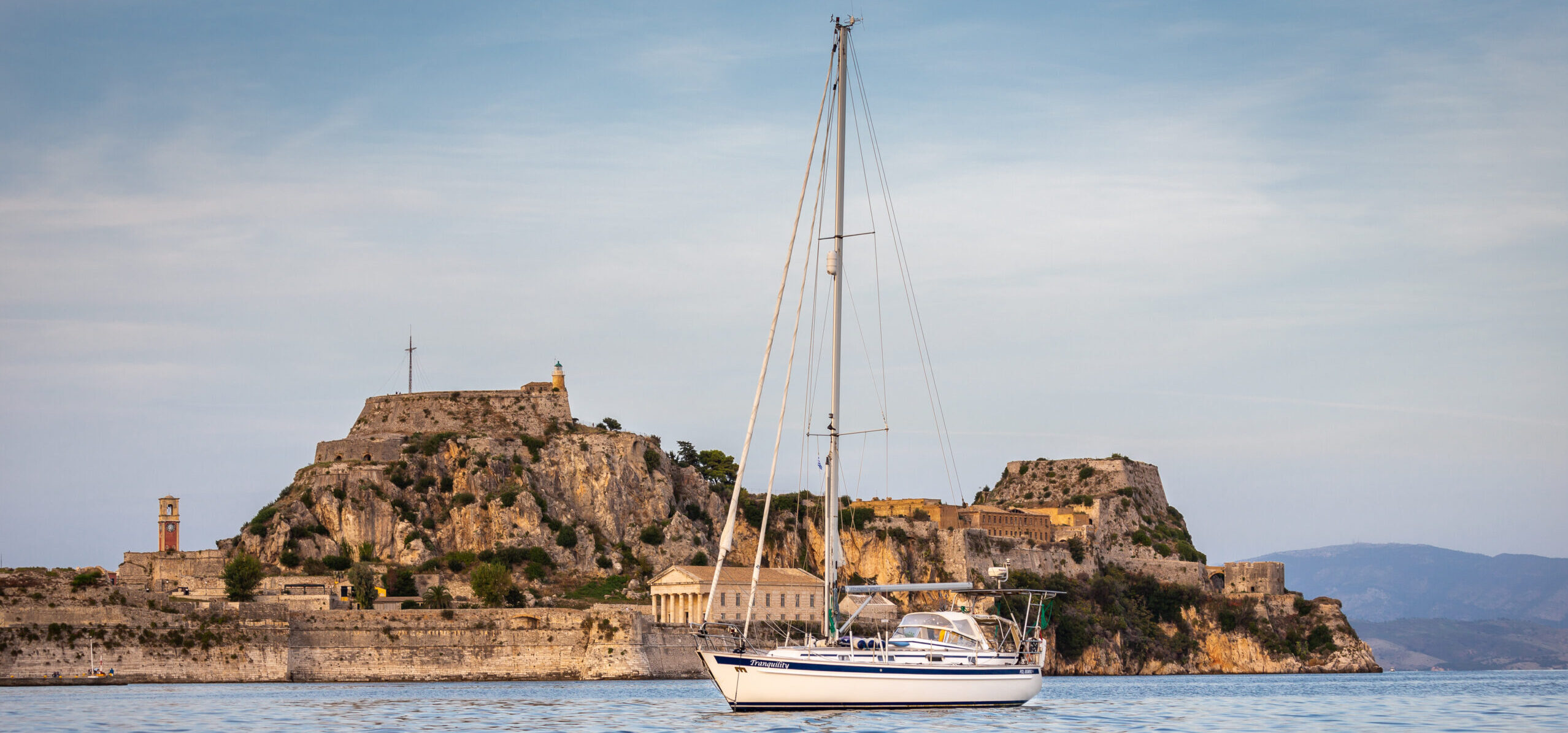



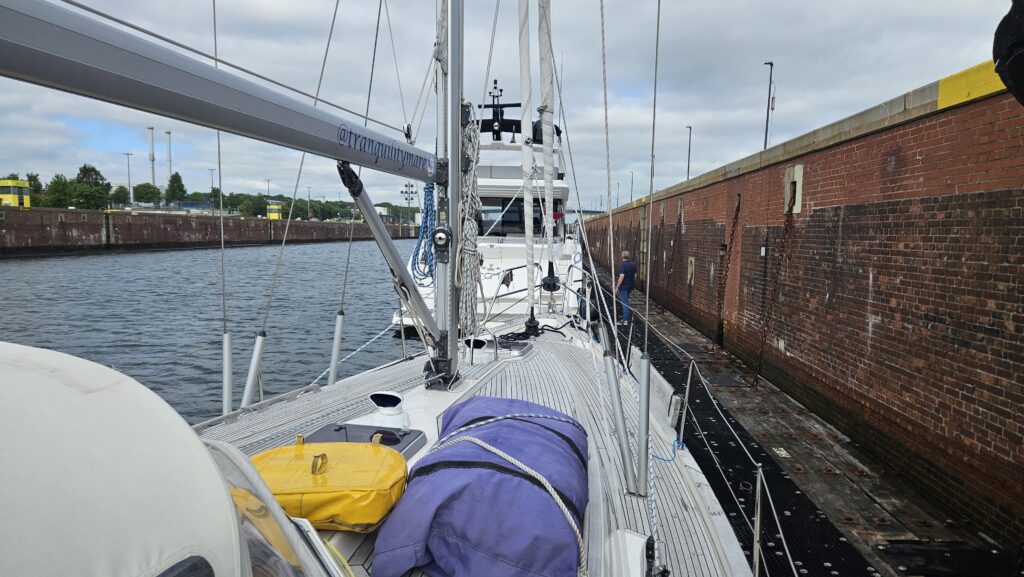


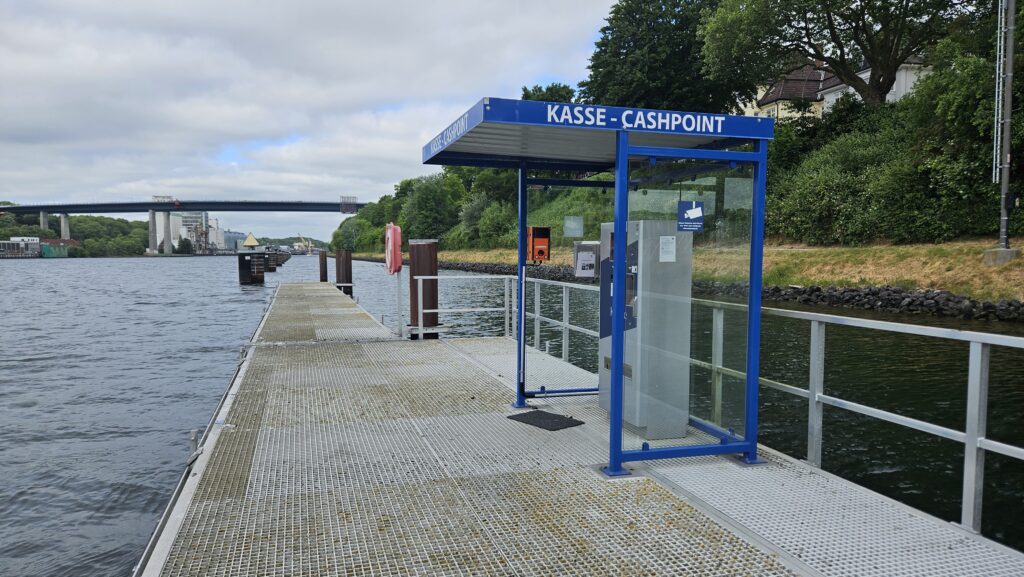
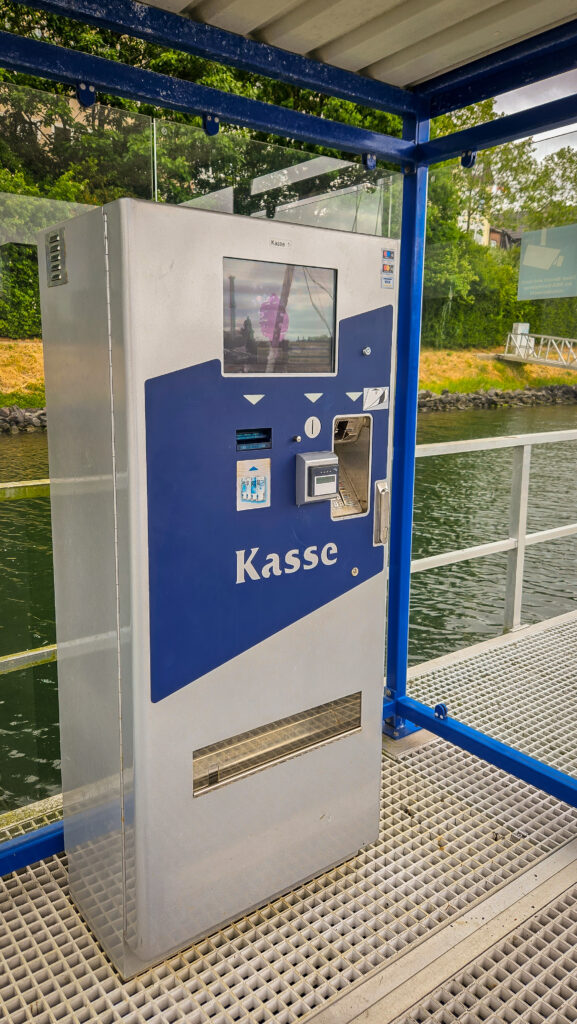


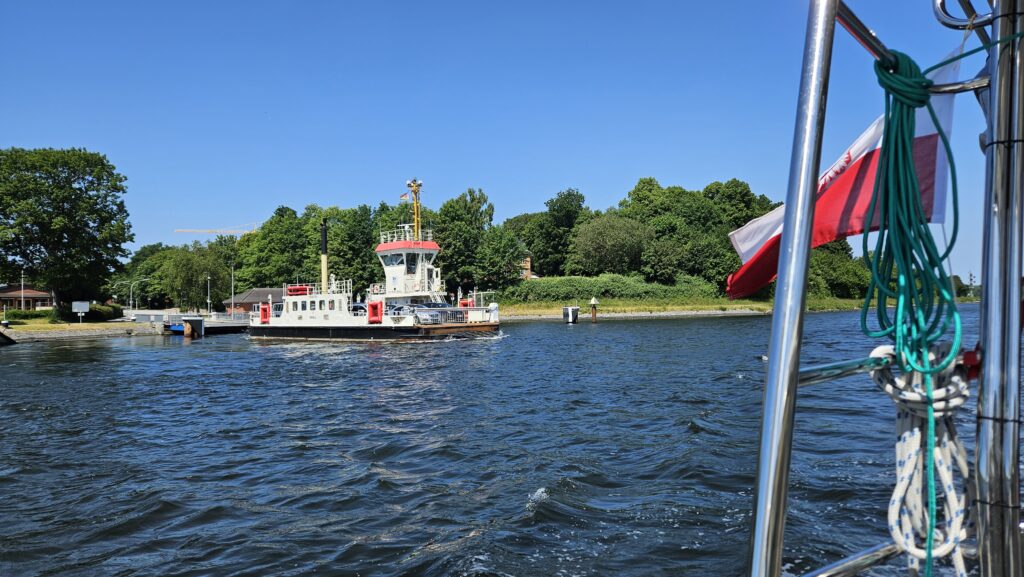
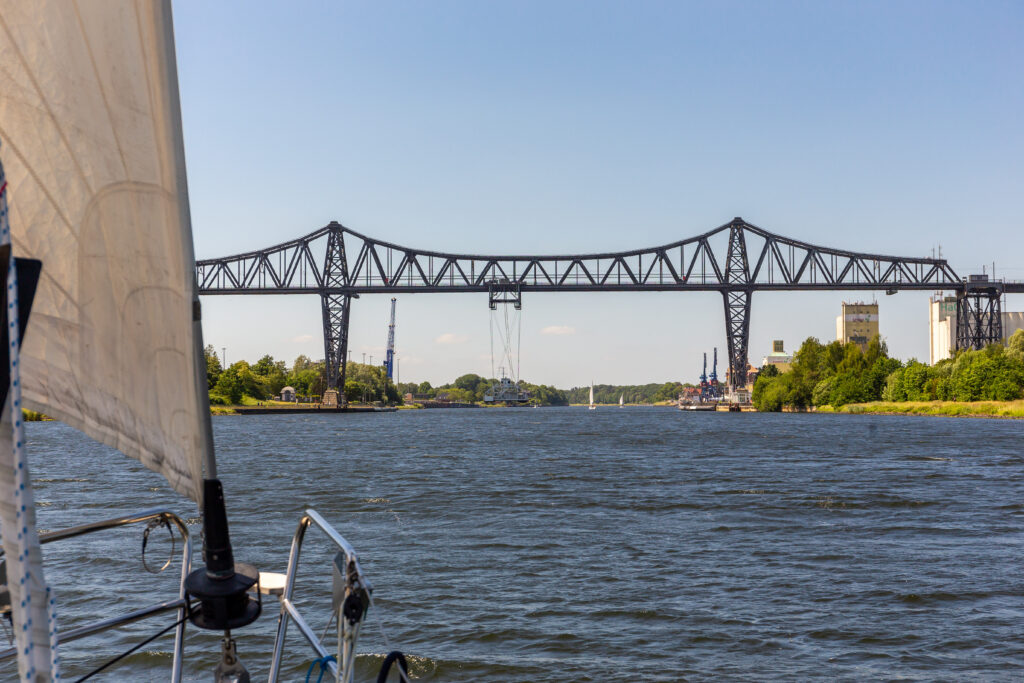
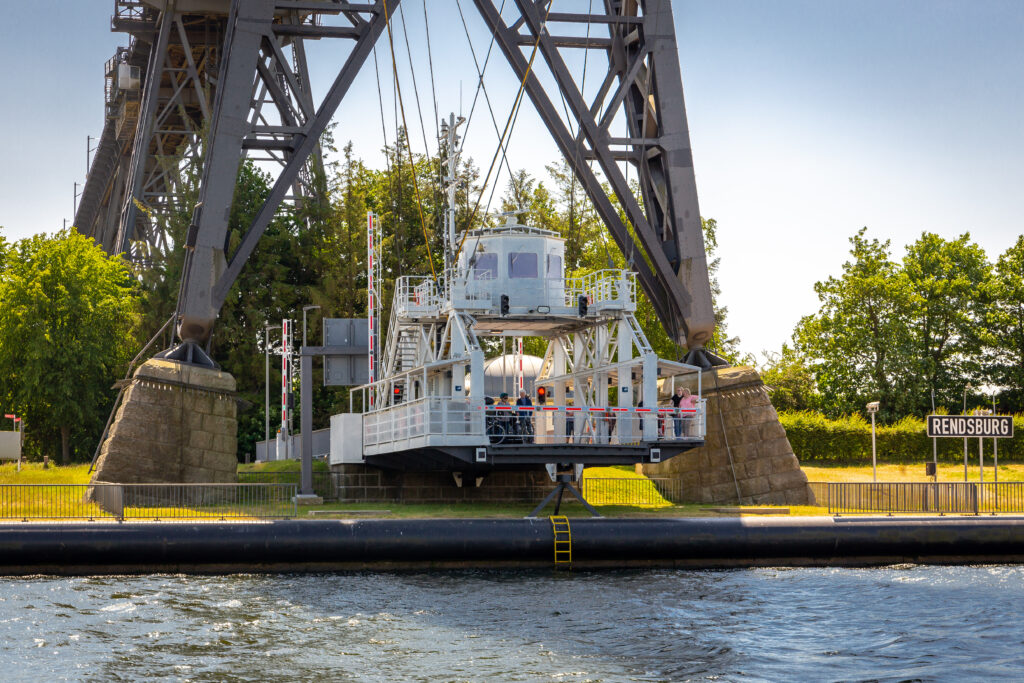
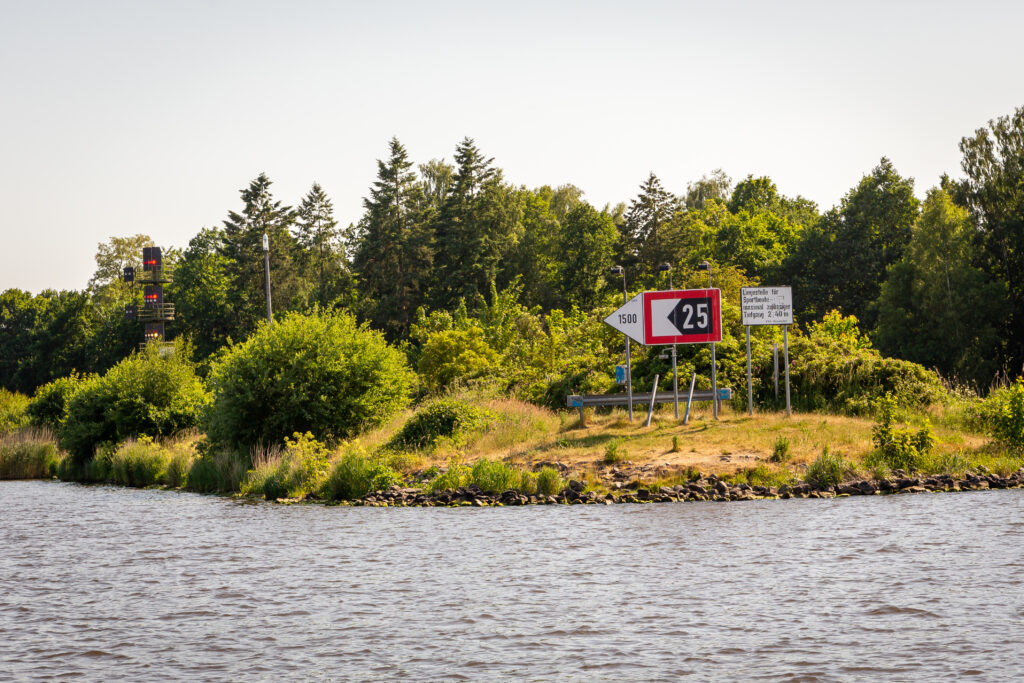
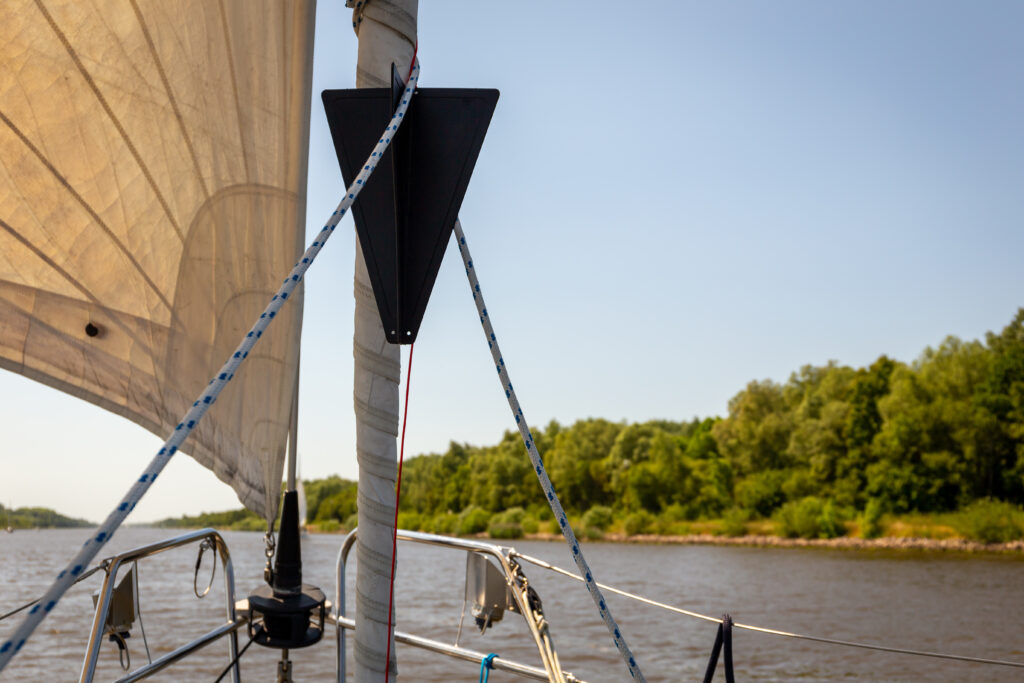

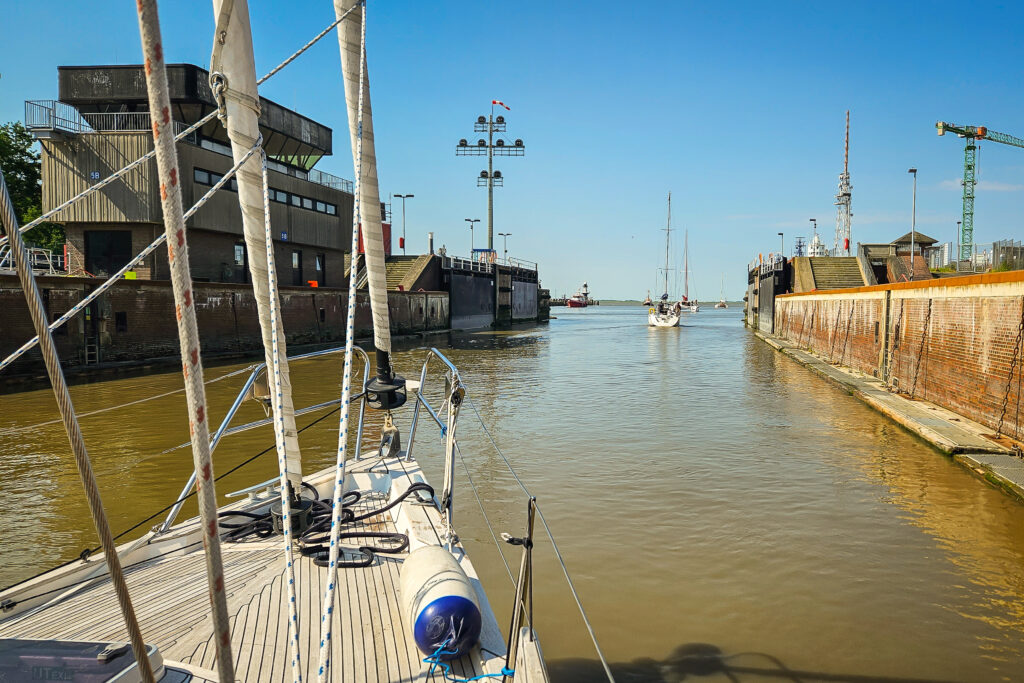
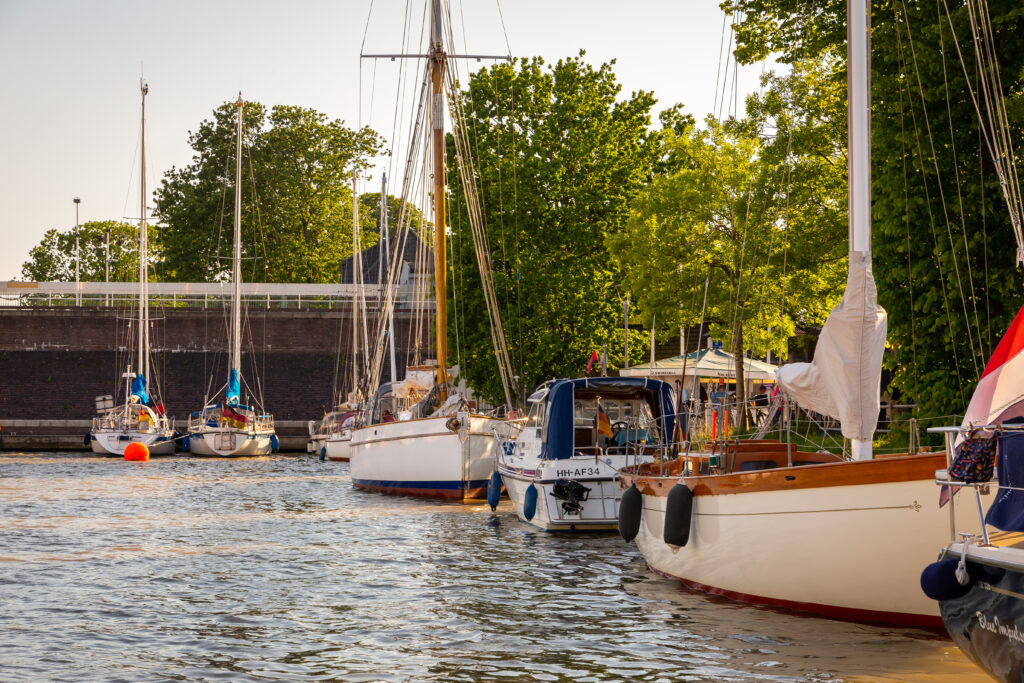
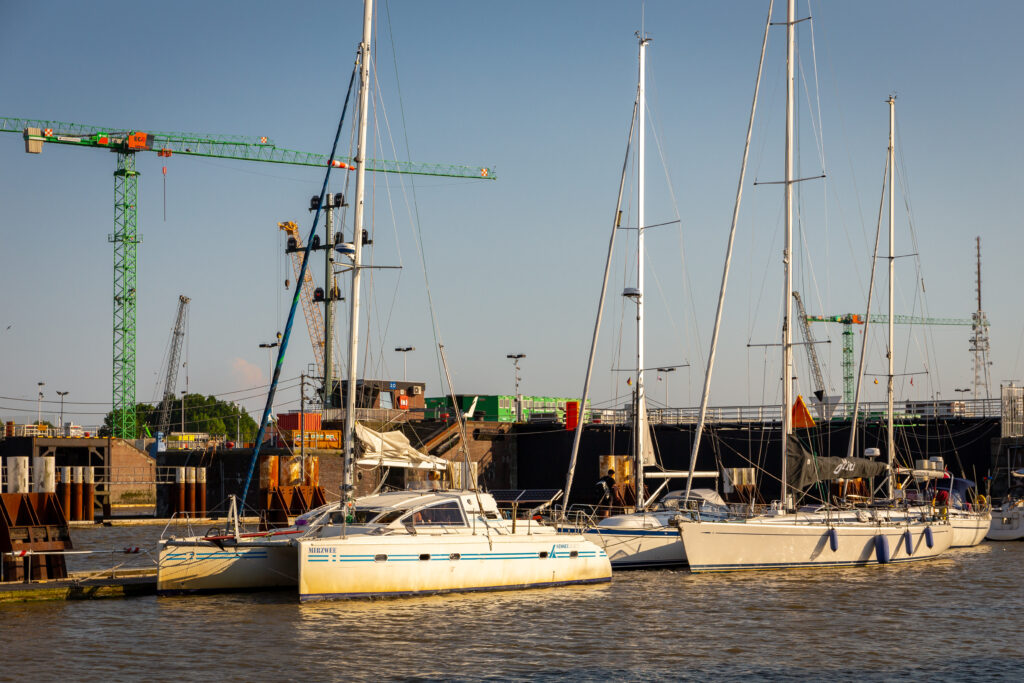

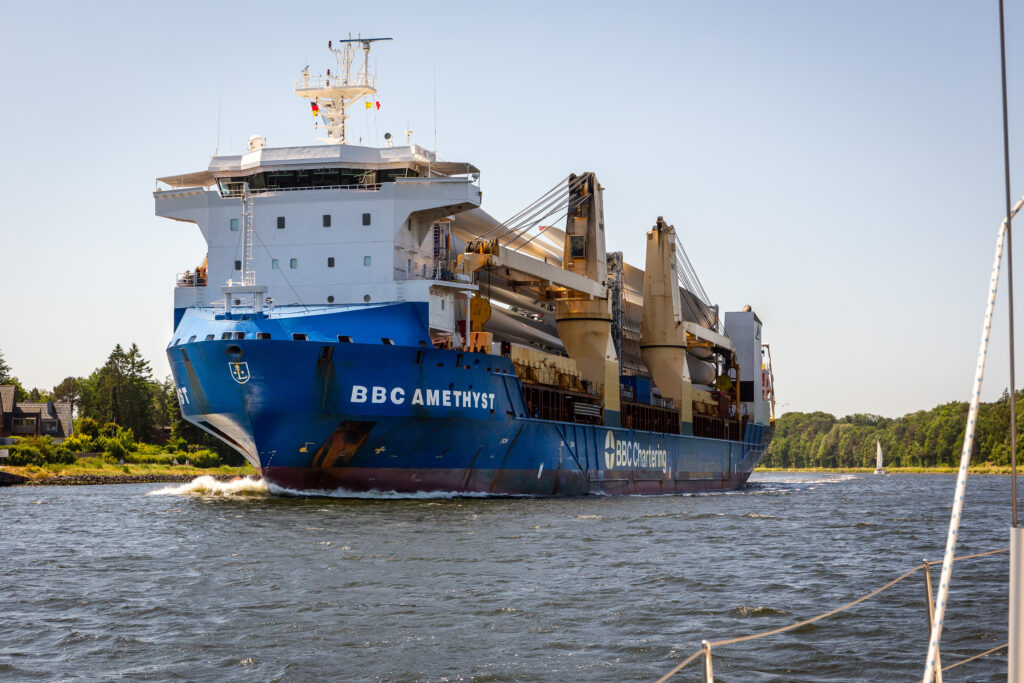
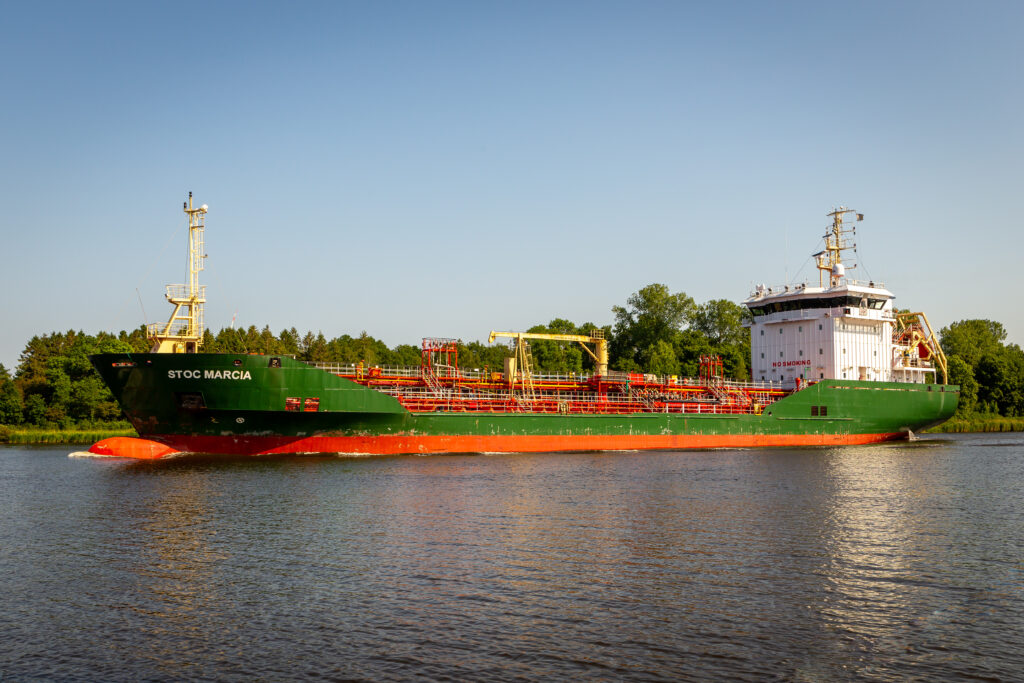



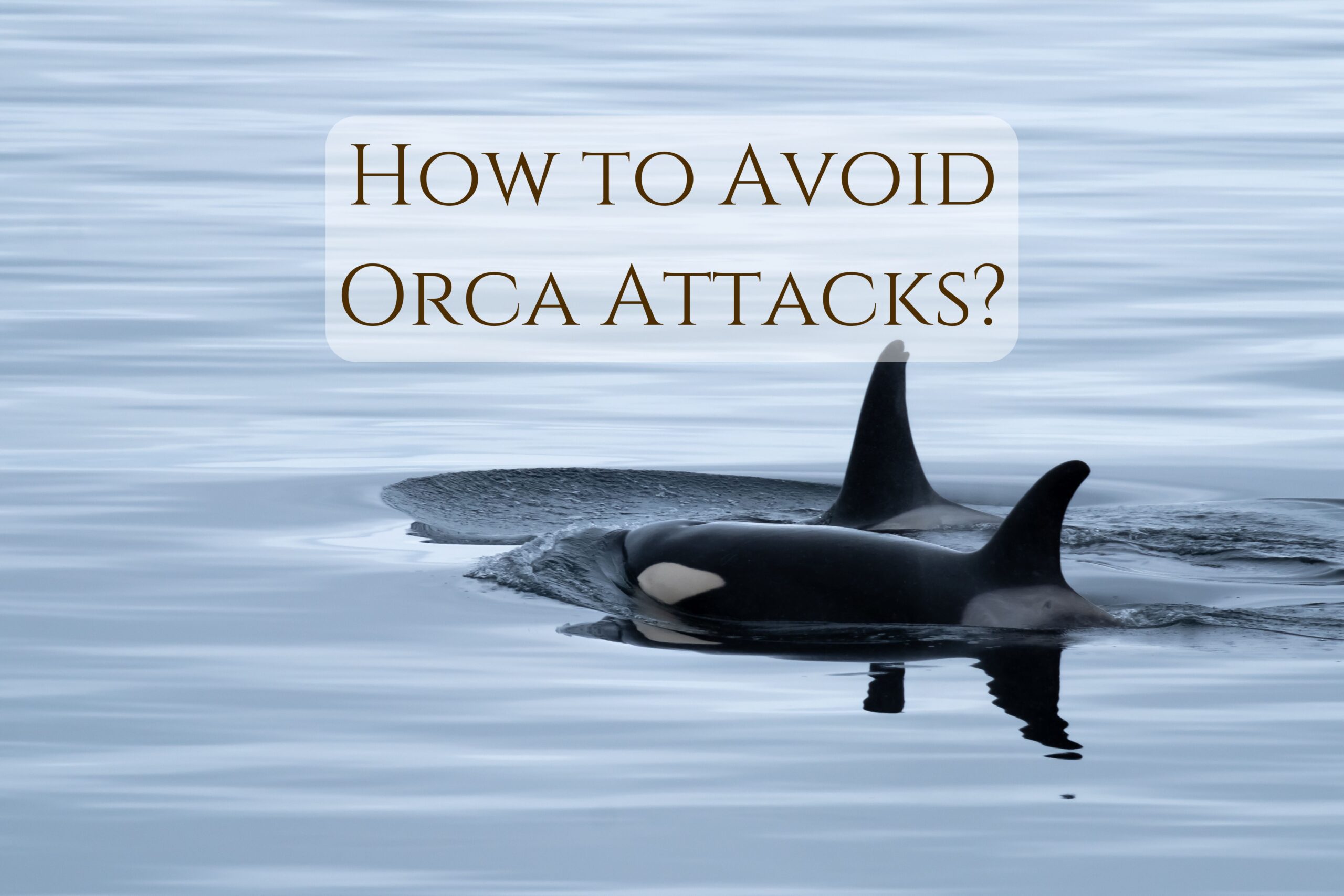

No responses yet